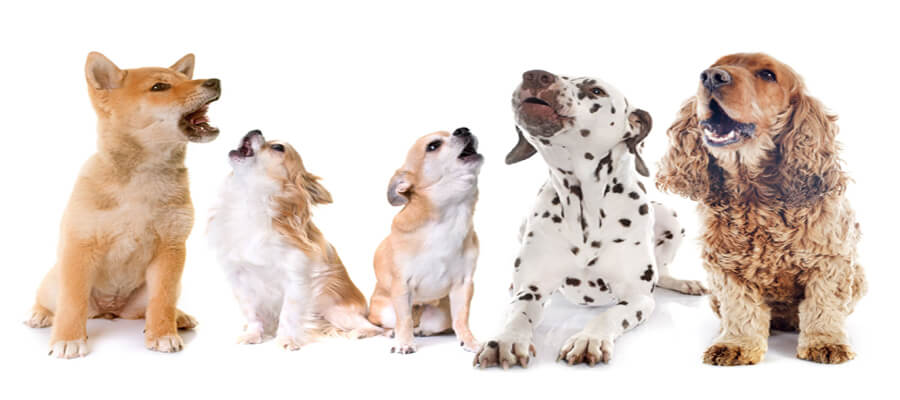
What to Do When Your Dog Won’t Stop Whining
What to Do When Your Dog Won’t Stop Whining: Effective Solutions for Pet Owners
Introduction
A dog’s whine can tug at your heartstrings, but when it becomes excessive, it can be frustrating for both you and your furry friend. Whining is a common form of communication among dogs, but understanding why your dog is whining is crucial to finding an effective solution. This article will explore the possible reasons behind your dog's whining and provide practical tips to help manage and reduce this behavior.
Understanding Why Dogs Whine
Before addressing your dog's whining, it's essential to identify the underlying reasons for this behavior. Dogs may whine for various reasons, including:
- Attention-Seeking: Dogs are social animals and may whine to get your attention, whether they want to play, be petted, or simply have you acknowledge their presence.
- Anxiety or Fear: Whining can be a sign of anxiety or fear, particularly during stressful situations, such as thunderstorms, fireworks, or changes in the household.
- Pain or Discomfort: If your dog is in pain or discomfort, they may whine to communicate their distress. This could be due to injury, illness, or other health issues.
- Desire to Go Outside: Dogs may whine when they need to go outside to relieve themselves or want to explore their surroundings.
- Excitement or Anticipation: Some dogs whine in anticipation of something exciting, like going for a walk, mealtime, or playtime.
- Puppy Behavior: Puppies often whine when they are learning to be independent or if they feel isolated from their littermates or caregivers.
How to Address Excessive Whining
To effectively manage your dog’s whining, it’s essential to use a combination of training techniques, environmental adjustments, and behavior modification. Here are some practical strategies to consider:
1. Identify the Trigger
Begin by observing your dog's behavior to identify what triggers the whining:
- Situational Triggers: Are there specific situations that prompt your dog to whine, such as when you leave the room or when they hear loud noises?
- Time of Day: Does your dog whine more at certain times, like when they are hungry or anxious about bedtime?
- Location: Is your dog more likely to whine in specific areas, such as near the door or when they see other animals outside?
Understanding these triggers will help you address the root cause of the whining.
2. Provide Adequate Attention and Exercise
Ensuring your dog receives enough attention and physical activity can help reduce whining:
- Quality Time: Spend quality time with your dog through play, walks, and training sessions. This will help meet their social and emotional needs.
- Regular Exercise: Engage your dog in daily physical activities. A tired dog is less likely to whine due to boredom or pent-up energy.
3. Teach the “Quiet” Command
Training your dog to be quiet on command can help manage excessive whining:
- Observe and Command: When your dog begins to whine, calmly say “quiet” and wait for them to stop whining.
- Reward Calmness: Once they stop, immediately reward them with praise or treats. Repeat this consistently to reinforce the behavior.
4. Create a Calm Environment
Making adjustments to your dog's environment can help reduce anxiety and stress:
- Safe Space: Create a quiet area in your home where your dog can retreat when feeling anxious or overwhelmed. Provide comfortable bedding and toys to keep them relaxed.
- Minimize Loud Noises: If your dog is sensitive to loud noises, consider using white noise machines or calming music to help mask disturbing sounds.
5. Address Anxiety and Fear
If you suspect that your dog's whining is due to anxiety or fear, consider the following strategies:
- Desensitization: Gradually expose your dog to the triggers that cause anxiety. Start with low-intensity exposure and gradually increase it while rewarding calm behavior.
- Counter-Conditioning: Change your dog’s emotional response to the trigger by pairing it with positive experiences, such as treats or playtime.
6. Avoid Reinforcing Whining
Be mindful not to reinforce whining behavior unintentionally:
- Ignore Attention-Seeking Whines: If your dog is whining for attention, avoid responding immediately. Instead, wait until they are calm before giving attention. This helps them learn that whining does not result in rewards.
- Stay Calm: Avoid yelling or scolding your dog for whining, as this can increase anxiety and may worsen the behavior.
7. Consult a Professional
If your dog’s excessive whining persists despite your best efforts, consider seeking professional help:
- Certified Dog Trainer: A professional trainer can provide personalized guidance and techniques tailored to your dog’s specific whining issues.
- Veterinary Consultation: If you suspect health problems, consult your veterinarian to rule out any underlying medical conditions that may be causing the whining.
Conclusion
Dealing with a dog that won’t stop whining can be a challenging experience, but understanding the reasons behind the behavior and employing effective strategies can lead to a calmer and more harmonious home. By identifying triggers, providing adequate exercise, and using positive reinforcement, you can help your dog learn to communicate in a quieter manner. Remember, consistency and patience are key when working to modify your dog’s behavior. With time and effort, you can strengthen your bond with your furry companion while creating a peaceful living environment.
Affiliate Products
